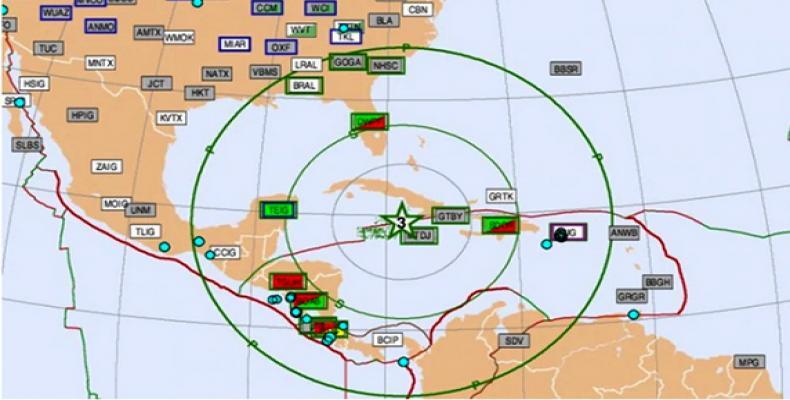Santiago de Cuba, January 29 (RHC) The National Center of Seismological Research (CENAIS), described the earthquake of magnitude 7.1 on the Richter scale, which occurred at 14 hours and 10 minutes Tuesday, as the strongest registered instrumentally in the history of the Cuban seismological service.
The president of the scientific council of the Santiago de Cuba-based center, Dr. Bladimir Moreno Toirán, told Granma newspaper that since the emergence of seismological stations in the country in 1964, this seismic movement had only been preceded in magnitude by one of 6.9 that occurred in 1991 in the same area, but a little closer to Cabo Cruz.
According to the official report, Tuesday's quake was perceptible throughout the country, due to its great magnitude of 7.1, and was located about 125 kilometers southwest of Cabo Cruz and 145 kilometers southwest of Niquero (Granma province), with its epicenter located in the sea at a depth of about 20 kilometers.
Regarding its occurrence, Moreno Toirán added that it was powerful but deep in the sea and very far away, both from Cuba and Jamaica, where it was also felt considerably.
He added that it was felt most was in the southeastern part of the country. However, there are reports of perceptibility throughout Cuba.
The specialist stated that there should not be concern about tsunamis, because the type of horizontal fault rupture mechanism, where the epicenter took place, which is on the Oriente fault (located very deep south of Cuba, between the Cayman Islands and the north of Haiti), does not generate tsunamis.
No human or material damage has been reported so far. According to Gustavo Alvarez Matos, head of the Civil Defense agency in Santiago, it is necessary to remain alert taken since it is not possible to predict these type of events.


